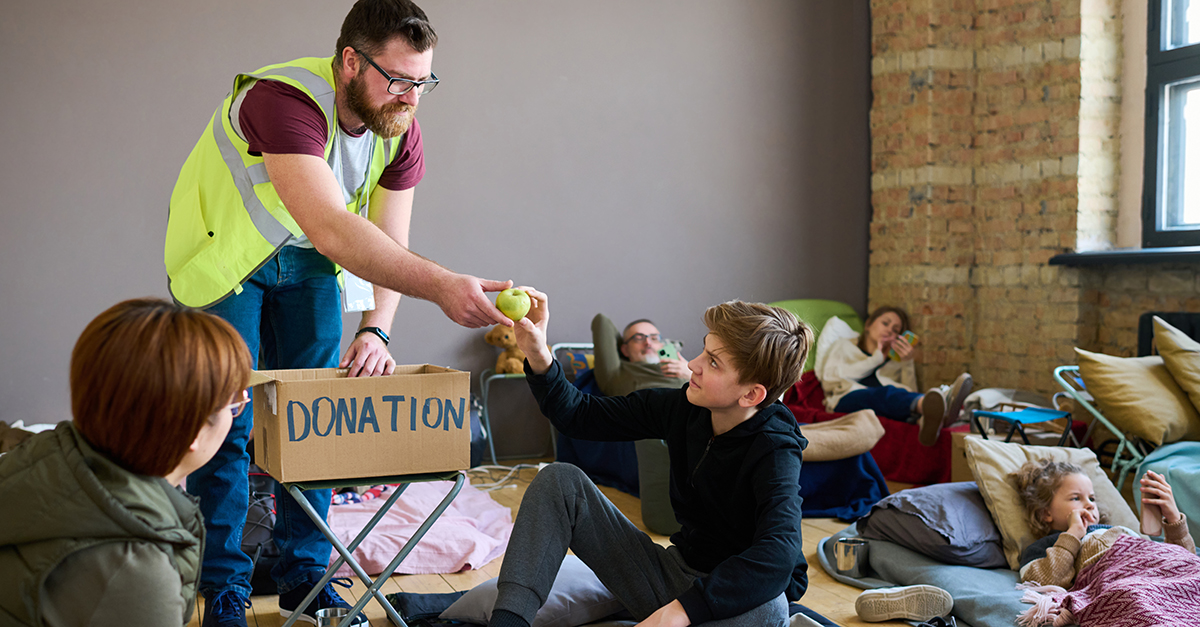In 2024, the U.S. experienced 27 confirmed weather disasters, each causing damages exceeding US$1 billion for a total of approximately $182.7 billion, according to data collected by the National Oceanic and Atmospheric Administration (NOAA). This ranks as the second-highest number of weather disasters in a single year, following the record 28 events in 2023.
Last year, weather disasters included 17 severe storms, five tropical cyclones, two winter storms, one flood, one drought/heat wave, and one wildfire. In comparison, the U.S. experienced three weather disasters in 1980.
Evacuation is inevitable
Severe weather in 2024 led to the evacuation of millions of residents. Hurricane Milton prompted mandatory evacuation orders for approximately 5.9 million people in Florida. Hurricane Helene
led to widespread evacuations across multiple states, including Florida, Georgia, North Carolina, and South Carolina.
In January, 14 destructive wildfires in the Los Angeles metropolitan area and San Diego County in California forced more than 200,000 people to evacuate and destroyed more than 18,000
buildings. Thousands seek refuge in evacuation shelters when natural disasters strike—such as hurricanes, wildfires, floods, extreme heat, and tornadoes. While these shelters are critical for
the immediate safety and protection of displaced individuals, they also create conditions for spreading infectious diseases. Crowded living spaces, limited access to hygiene facilities, and disruptions in public health services can all contribute to disease outbreaks in these temporary communities.
Lessons from disease outbreaks
Norovirus outbreak: Hurricane Katrina (2005), Louisiana: Hurricane Katrina’s aftermath displaced more than 1 million people. Many took refuge in large shelters, such as the Houston
Astrodome (which hosted 25,000) and various shelters across Louisiana. According to U.S. Centers for Disease Control and Prevention (CDC) reports, multiple norovirus outbreaks occurred,
particularly in crowded shelters with inadequate handwashing facilities. The virus spread rapidly, causing symptoms of vomiting and diarrhea among evacuees and response workers.
Key lessons:
- Shelters need access to cleaning products, disinfectants, and cleaning tools.
- Accessible handwashing stations equipped with soap and water are essential.
- Teams must be trained in proper techniques for frequent surface cleaning and disinfection.
Respiratory illness outbreak: Hurricane Harvey (2017), Texas: Following Hurricane Harvey, severe flooding in Texas led to establishing 692 evacuation shelters to house over 42,000 people. A significant respiratory illness outbreak occurred in one shelter housing more than 3,000 people, according to the CDC. Symptoms included cough, congestion, and sore throat, with several confirmed cases of influenza and respiratory syncytial virus (RSV).
Key lessons:
- Airborne illness risk increases in enclosed, densely populated shelters.
- Prioritize proper ventilation and air movement to decrease risk.
- Isolation areas and infection control protocols can reduce transmission.
Skin and soft tissue infections: Joplin Tornado (2011), Missouri: After the devastating EF5 tornado in Joplin, Missouri, evacuees took shelter in local facilities. Shelter residents contracted methicillin-resistant Staphylococcus aureus (MRSA) and other skin infections. Research published in the New England Journal of Medicine found that shared showers, cuts from
debris, and inadequate cleaning of sleeping mats contributed to these outbreaks.
Key Lessons:
- Wound care and personal hygiene kits are essential in post-disaster shelters.
- Infection prevention and antimicrobial stewardship are critical.
- Volunteers and staff must be trained in proper techniques for cleaning and disinfecting showers, toilets, and sleeping mats.
Norovirus outbreak: Hurricane Sandy (2012), New Jersey: Hurricane Sandy led to the establishment of 73 evacuation shelters across New Jersey and New York for approximately
6,800 individuals. Shelters reported norovirus outbreaks, including one in Monmouth County that affected over 100 people. Research published in Public Health Reports revealed that the virus
likely spread through contaminated surfaces and close contact, exacerbated by inadequate cleaning and hygiene resources.
Key Lessons:
- Rigorously enforce surface cleaning and disinfection protocols.
- Hand sanitizer alone may be insufficient; handwashing with soap is critical.
- Train staff and volunteers in appropriate cleaning procedures and personal protective equipment (PPE) use.
Prepare for disasters
GBAC STAR™-accredited facilities have developed enhanced safety and preparedness protocols for emergencies and disasters. Training for GBAC STAR certification emphasizes appropriate cleaning and disinfection protocols, which are crucial in shelters to prevent the spread of infectious diseases in crowded spaces. The training also covers the proper use of PPE to help protect shelter workers and volunteers from potential hazards, including infectious diseases.
In addition, GBAC STAR guidelines include considerations for indoor air quality (IAQ), such as tips on ventilation, filtration, and using IAQ monitors to ensure a safe and healthy environment.
Besides cleaning and disinfection training, GBAC STAR certification includes training on disaster preparedness and response, using risk assessments to identify potential vulnerabilities
and prioritize safety measures.
Trainees will learn how to apply GBAC STAR principles to develop and implement emergency preparedness plans, including protocols for evacuation, sheltering, and disease outbreak response.
GBAC STAR training also emphasizes the importance of clear communication with staff, volunteers, and evacuees about safety protocols and procedures.
Overcome shelter challenges
Disease outbreaks in evacuation shelters are a recurrent challenge due to overcrowding, limited hygiene infrastructure, and resource constraints. These real-world cases underline the critical
need for infection prevention planning, cleaning personnel training, and improved access to cleaning products, disinfectants, PPE, and handwashing stations.
GBAC STAR facilities rely on the program’s principles of infection control, preparedness, and response to create valuable tools for ensuring the safety and well-being of evacuees, volunteers, and
responders during emergencies.




